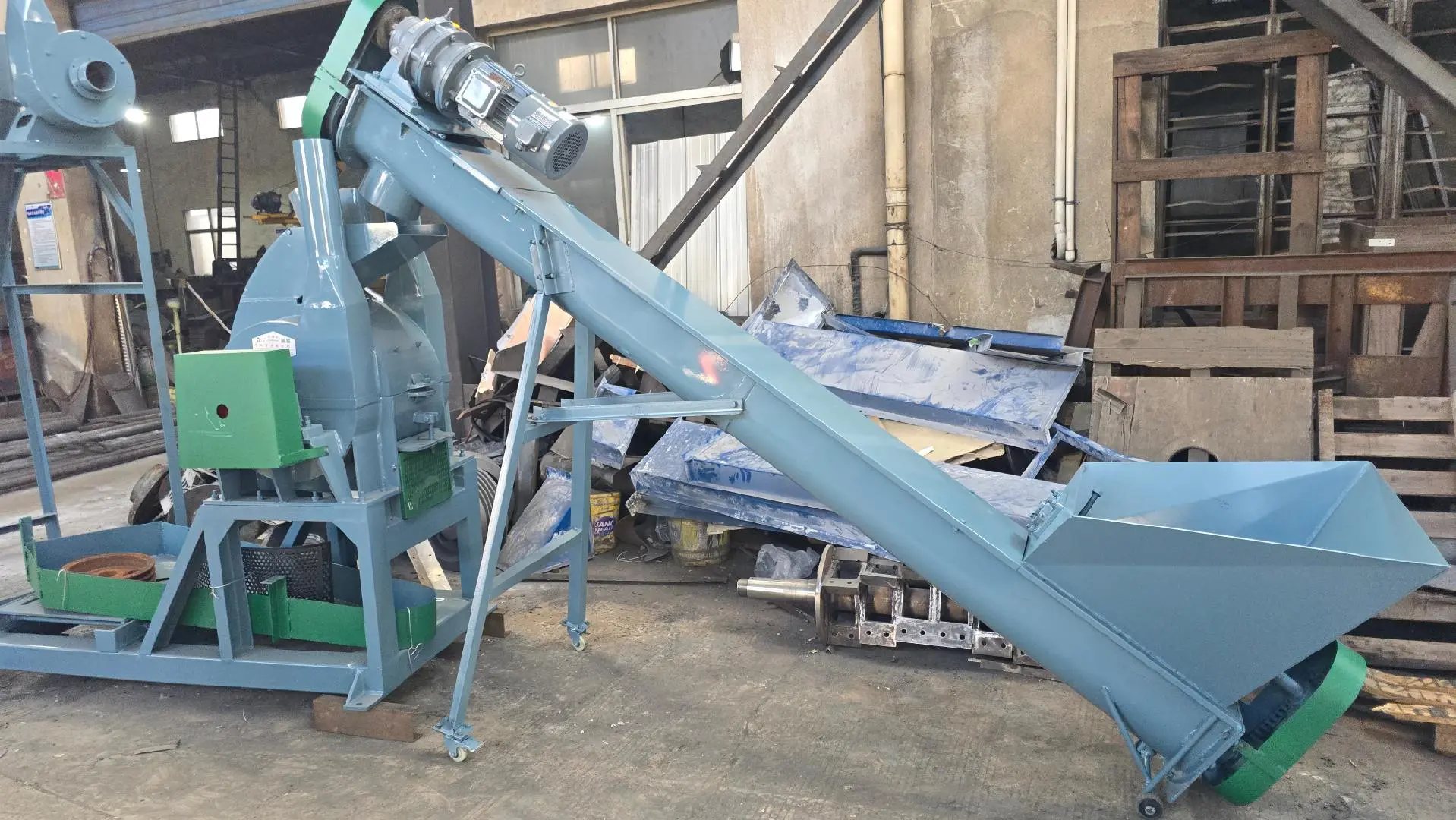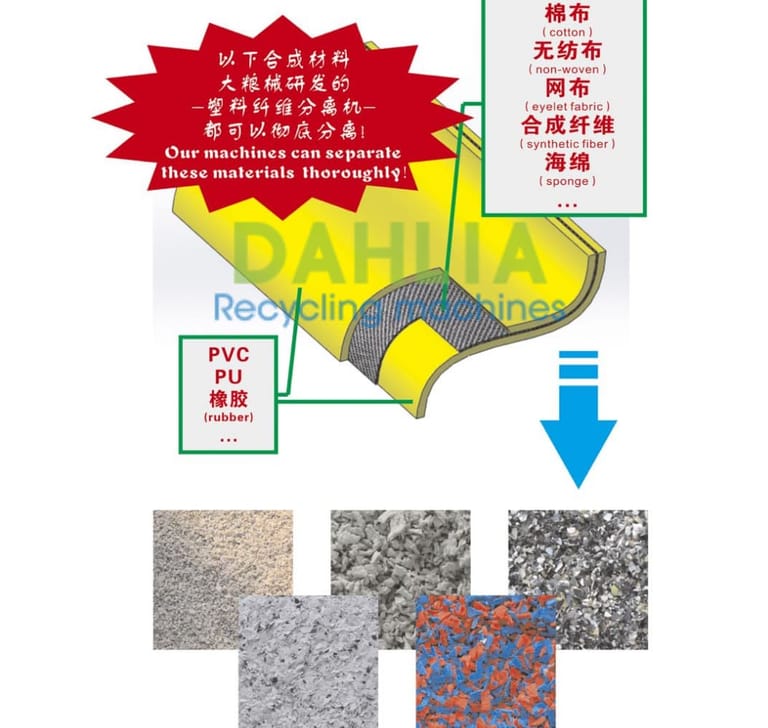
PVC yacht leather separator machine
one plastic fiber recycling machine. It can be used to crush and separate the plastic and fabric fibers from artificial leather, and advertising leather.
PVC yacht leather separator machine is one plastic fiber recycling machine.
It can be used to crush and separate the plastic and fabric fibers from artificial leather, and advertising leather.
This machine offers excellent crushing and separation performance, low investment costs, and high recycling returns.
It is widely used for recycling waste advertising fabrics, light box fabrics, automotive interior materials, rain boots, fiber tubes, and artificial leather.
How to work
Our plastic fiber recycling system transforms mixed waste materials—such as advertising banners, artificial leather, rain boots, and plastic pipes—into high-value plastic pellets and fiber, enabling sustainable resource reuse. Here’s how it works:
Step 1: Heavy-Duty Crushing for Uniform Particle Size
First, feed composite waste materials into our industrial-grade crusher. Equipped with robust blades and a high-torque motor, the crusher efficiently grinds or shears materials into consistent small particles (typically 6–10mm), homogenizing plastic, fiber, and other components into a mixed stream. This critical preprocessing step ensures optimal separation in subsequent stages.
Step 2: Gravity-Driven Separation via Centrifugal Force
The crushed mixture is then conveyed to the separator—via belt or screw conveyor—where advanced gravity separation technology takes over. Leveraging the differing specific gravities of plastic (denser) and chemical fiber (lighter), the separator’s precision-engineered crushing chamber, fitted with specialized blades and toothed plates, further loosens and isolates fibers from plastic.
As the mixture processes, dual-side centrifugal fans generate powerful airflow, suctioning lightweight fibers through dedicated outlets. Meanwhile, denser plastic particles, unaffected by the airflow, settle and exit through the lower discharge port, achieving near-complete separation of plastic and fiber.
Step 3: High-Quality Outputs for Versatile Reuse
The end result: purified plastic particles and clean fiber, each ready for value-added recycling. Plastic particles can be directly fed into granulation lines to produce recycled pellets (ideal for injection molding, extrusion, or 3D printing) or used as raw material for new plastic products (e.g., pipes, containers, or construction materials). Fibers, meanwhile, find applications in non-woven fabrics, insulation, or composite fillers, closing the loop on waste and reducing reliance on virgin resources.

Contact us
Whatsapp/Mobile: +86 187 3815 8809
© 2025. All rights reserved.


